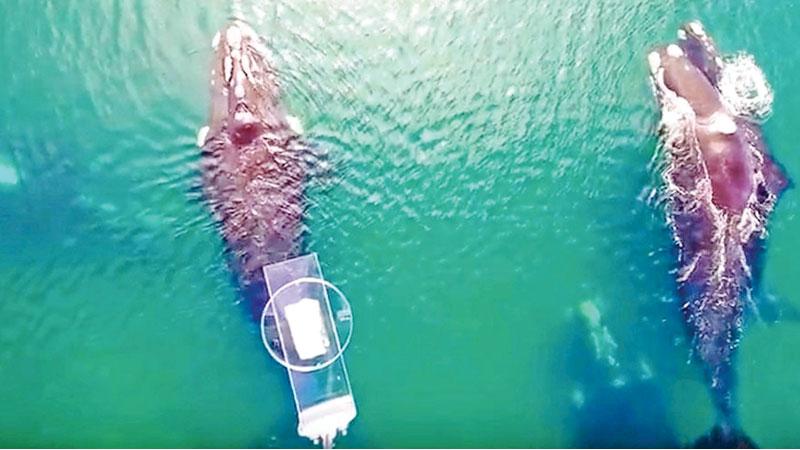
Whales are in danger from threats like noise pollution, trash, acidification and overfishing. But, it’s difficult to collect data from the massive sea mammals to learn more about how these threats are impacting them without disturbing the whales themselves.
Enter drones.
Scientists from the Ocean Alliance have been working with roboticists to create a drone that can collect the mucus-like substance that’s exhaled out of the blowholes on the tops of whales’ heads. It’s essentially whale snot, and the drone, appropriately, is dubbed a SnotBot. Whale snot contains a tremendous amount of biological data that’s traditionally hard to get, including DNA, microbiome information, hormone levels and the whale’s metabolism. The SnotBot hovers above whales as they surface for air. They then lower petri dishes that capture the whale’s snot spray.
Without SnotBot, scientists generally have to either position a long pole over a whale’s blowhole, perform a necropsy on a dead whale or approach a live one with a boat to attempt to collect samples, Ocean Alliance’s website explains. SnotBot is also fitted with a camera and collects aerial video and images from the whales, which scientists use to review the whale’s behaviour and body features without disturbing the mammals with loud boats or aircraft.
So far, the SnotBot drone has travelled on expeditions to visit whales swimming off the coast of Patagonia, Mexico and Alaska. The drone uses artificial intelligence drone technology from Intel to help analyze the data it collects. And using Intel’s software, the drones can identify particular whales and assess their health in real time.
Recode.net
